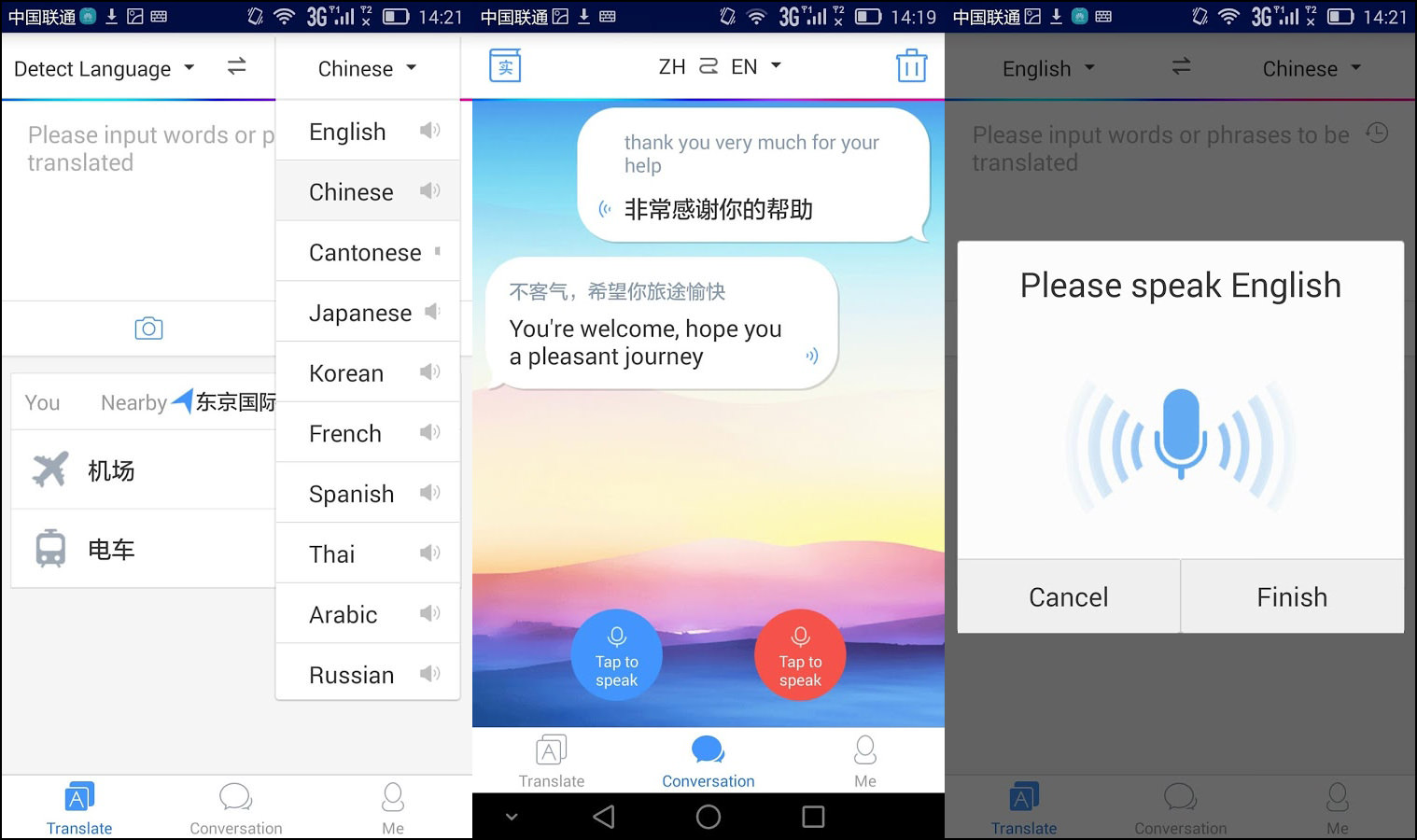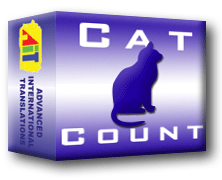26 Free Tools And Resources For Freelance Translators Translation is a labor-intensive and often monotonous process that involves significant efforts. Getting back to the pre-internet era, it is hard to imagine how difficult it was to be a translator.
Modern CAT tools can accept most of common format files, but in some cases, only some tools may accept specific formats. Find out what file types you can translate with Trados 7 and Trados 2007. TRADOS is a CAT (computer assisted translation) tool that can help translators perform fast and accurate translation procedures for various texts. Even if there is no version of TRADOS for Mac released yet, there are other applications you can use instead. I find this tool extremely helpful as it is almost free (you pay for recognition and machine translation & the price is very low), available online (no need to install anything on your PC or Mac), easy to learn even you are totally new to CAT tools and have never used any of them, support is adequately fast.
| Part of a series on |
| Translation |
|---|
| Types |
|
| Theory |
| Technologies |
| Localization |
| Institutional |
| Related topics |
Computer-assisted translation, computer-aided translation or CAT is a form of language translation in which a human translator uses computer hardware to support and facilitate the translation process.[1]
Computer-assisted translation is sometimes called machine-assisted, or machine-aided, translation (not to be confused with machine translation).
- 3Concepts
Overview[edit]
The automatic machine translation systems available today are not able to produce high-quality translations unaided: their output must be edited by a human to correct errors and improve the quality of translation. Computer-assisted translation (CAT) incorporates that manual editing stage into the software, making translation an interactive process between human and computer.[2]
Some advanced computer-assisted translation solutions include controlled machine translation (MT). Higher priced MT modules generally provide a more complex set of tools available to the translator, which may include terminology management features and various other linguistic tools and utilities. Carefully customized user dictionaries based on correct terminology significantly improve the accuracy of MT, and as a result, aim at increasing the efficiency of the entire translation process.
Range of tools[edit]
Computer-assisted translation is a broad and imprecise term covering a range of tools, from the fairly simple to the complicated. These can include:
- Translation memory tools (TM tools), consisting of a database of text segments in a source language and their translations in one or more target languages.[3]
- Spell checkers, either built into word processing software, or available as add-on programs
- Grammar checkers, either built into word processing software, or available as add-on programs.
- Terminology managers, which allow translators to manage their own terminology bank in an electronic form. This can range from a simple table created in the translator's word processing software or spreadsheet, a database created in a program such as FileMaker Pro or, for more robust (and more expensive) solutions, specialized software packages such as SDL MultiTerm, LogiTerm, Termex, TermWeb, etc.
- Electronic dictionaries, either unilingual or bilingual, also known as dictorobotary
- Terminology databases, either on the host computer or accessible through the Internet, such as TERMIUM Plus or Grand dictionnaire terminologique from the Office québécois de la langue française
- Full-text search tools (or indexers), which allow the user to query already translated texts or reference documents of various kinds. Some such indexers are ISYS Search Software, dtSearch Desktop and Naturel
- Concordancers, which are programs that retrieve instances of a word or an expression and their respective context in a monolingual, bilingual or multilingual corpus, such as a bitext or a translation memory
- Bitext aligners: tools that align a source text and its translation which can then be analyzed using a full-text search tool or a concordancer
- Project management software that allows linguists to structure complex translation projects in a form of chain of tasks (often called 'workflow'), assign the various tasks to different people, and track the progress of each of these tasks
Concepts[edit]
Translation memory software[edit]
Translation memory programs store previously translated source texts and their equivalent target texts in a database and retrieve related segments during the translation of new texts.[4]
Such programs split the source text into manageable units known as 'segments'. A source-text sentence or sentence-like unit (headings, titles or elements in a list) may be considered a segment. Texts may also be segmented into larger units such as paragraphs or small ones, such as clauses. As the translator works through a document, the software displays each source segment in turn, and provides a previous translation for re-use if it finds a matching source segment in its database. If it does not, the program allows the translator to enter a translation for the new segment. After the translation for a segment is completed, the program stores the new translation and moves on to the next segment. In the dominant paradigm, the translation memory is, in principle, a simple database of fields containing the source language segment, the translation of the segment, and other information such as segment creation date, last access, translator name, and so on. Another translation memory approach does not involve the creation of a database, relying on aligned reference documents instead.[5]
Some translation memory programs function as standalone environments, while others function as an add-on or macro for commercially available word-processing or other business software programs. Add-on programs allow source documents from other formats, such as desktop publishing files, spreadsheets, or HTML code, to be handled using the TM program.
Language search-engine software[edit]
New to the translation industry, Language search-engine software is typically an Internet-based system that works similarly to Internet search engines. Rather than searching the Internet, however, a language search engine searches a large repository of Translation Memories to find previously translated sentence fragments, phrases, whole sentences, even complete paragraphs that match source document segments.
Language search engines are designed to leverage modern search technology to conduct searches based on the source words in context to ensure that the search results match the meaning of the source segments. Like traditional TM tools, the value of a language search engine rests heavily on the Translation Memory repository it searches against.
Terminology management software[edit]
Terminology management software provides the translator a means of automatically searching a given terminology database for terms appearing in a document, either by automatically displaying terms in the translation memory software interface window or through the use of hot keys to view the entry in the terminology database. Some programs have other hotkey combinations allowing the translator to add new terminology pairs to the terminology database on the fly during translation. Some of the more advanced systems enable translators to check, either interactively or in batch mode, if the correct source/target term combination has been used within and across the translation memory segments in a given project. Independent terminology management systems also exist that can provide workflow functionality, visual taxonomy, work as a type of term checker (similar to spell checker, terms that have not been used correctly are flagged) and can support other types of multilingual term facet classifications such as pictures, videos, or sound.[6][4]
Alignment software[edit]
Alignment programs take completed translations, divide both source and target texts into segments, and attempt to determine which segments belong together in order to build a translation memory or other reference resource with the content. Many alignment programs allow translators to manually realign mismatched segments. The resulting bitext (also known as parallel text) alignment can then be imported into a translation memory program for future translations or used as a reference document.
Interactive machine translation[edit]
Interactive machine translation is a paradigm in which the automatic system attempts to predict the translation the human translator is going to produce by suggesting translation hypotheses. These hypotheses may either be the complete sentence, or the part of the sentence that is yet to be translated.

Augmented translation[edit]
Augmented translation is a form of human translation carried out within an integrated technology environment that provides translators access to subsegment adaptive machine translation (MT) and translation memory (TM), terminology lookup (CAT), and automatic content enrichment (ACE) to aid their work, and that automates project management, file handling, and other ancillary tasks.[7][8]
Based on the concept of augmented reality, augmented translation seeks to make translators more productive by providing them with relevant information on an as-needed basis. This information adapts to the habits and style of individual translators in order to accelerate their work and increase productivity. It differs from classical postediting of MT, which has linguists revise entire texts translated by machines, in that it provides machine translation and information as suggestions that can be adopted in their entirety, edited, or ignored, as appropriate.[7]
Augmented translation extends principles first developed in the 1980s that made their way into CAT tools. However, it integrates several functions that have previously been discrete into one environment. For example, translators historically have had to leave their translation environments to do terminology research, but in an augmented environment, an ACE component would automatically provide links to information about terms and concepts found in the text directly within the environment.
As of May 2017, no full implementations of an augmented translation environment exist, although individual developers have created partial systems.
See also[edit]
References[edit]
- ^Bowker, Lynne (2002). Computer-aided Translation Technology. Ottawa: University of Ottawa Press. p. 144.
- ^Barrachina, Sergio; et al. (2009). 'Statistical Approaches to Computer-Assisted Translation'(PDF). Computational Linguistics. 35 (1): 3–28. doi:10.1162/coli.2008.07-055-r2-06-29. ISSN0891-2017.
- ^Christensen, Tina Paulsen; Schjoldager, Anne. 'Translation-Memory (TM) Research: What Do We Know and How Do We Know It?'(PDF). Hermes. 44.
- ^ ab'Terminology Management and MT'(PDF). Circuit. 117.
- ^'CAT Tools vs. Machine Translation: What's the Best Method?'. Asian Absolute. Retrieved 29 January 2017.
- ^'Archived copy'(PDF). Archived from the original(PDF) on 2012-04-25. Retrieved 2011-10-03.Cite uses deprecated parameter
|deadurl=(help)CS1 maint: archived copy as title (link) - ^ abDePalma, Donald A. and Arle Lommel (2017-02-15). 'Augmented Translation Powers up Language Services'. Common Sense Advisory. Retrieved 2017-05-19.
- ^Eggers, William D., David Schatsky, and Dr. Peter Viechnicki (2017-04-26). 'AI-augmented government: Using cognitive technologies to redesign public sector work'. Deloitte University Press. Retrieved 2017-05-19.
External links[edit]
| Wikibooks has a book on the topic of: CAT-Tools |
Cat Translation Tool
- Computer Aided Translation at Curlie
I want to translate a long text and I am looking for a software that shows the text and the translation I write at the same time, in two windows and with possibly a synchronization. Does it exist? Otherwise, what are the existing softwares and what do they do ?
PS: I want to translate a 250 page book... I am not looking for a software that does the translation, but for an nice interface where I can do the translation.

4 Answers
If you are asking about professional translation tools (rather than machine transation sites), there is a useful survey that includes some for Mac at
Also can ask on the list devoted to Mac pro translators
(Relying on machine translation inevitably involves substantial risks of potentially embarassing errors, I recommend that the results should always be edited by a pro or native speaker)
Tom GeweckeTom GeweckeI've used http://www.acetools.net/ and it works pretty good. It has pretty basic text editing. Also Microsoft Word can translate up to 400 words at a time via its reference tools.
Scott WalterScott WalterTry Overspot - https://www.redactry.com/overspotReally good translation app for macOS.

I find that Google Translate, free online at https://translate.google.com/ is the best I have used.